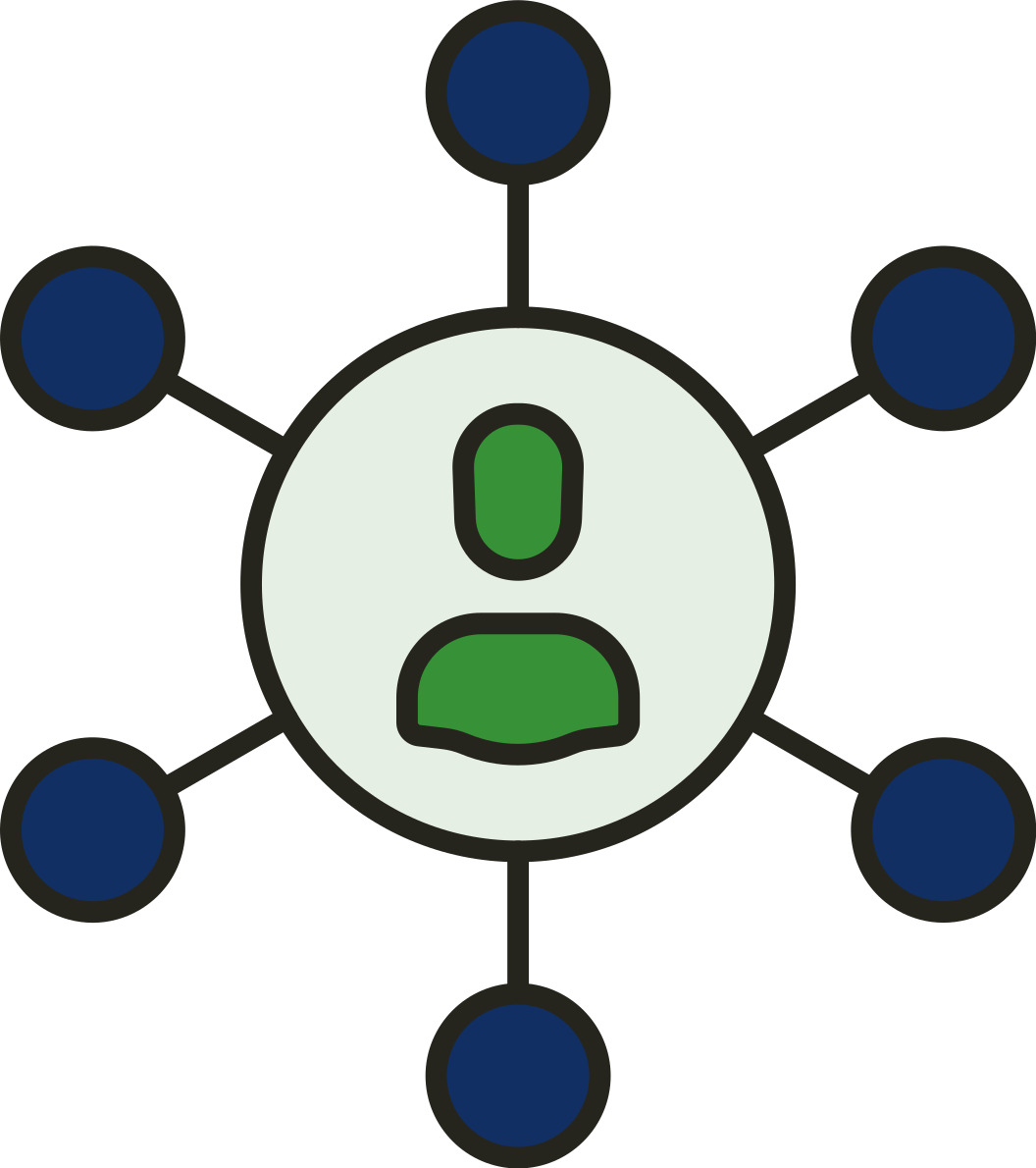

Implementing computational and data science approaches and tools to advance nutrition for precision health in a way that accounts for the complex systems involved.

Jump to a section
Get more information on: __
Who We Are
The Artificial Intelligence, Modeling, and Informatics, for Nutrition Guidance and Systems (AIMINGS) Center is supported by the National Institutes of Health (NIH) and serves as the Artificial Intelligence (AI) Center for the NIH’s Nutrition for Precision Health (NPH) Consortium.
Precision nutrition is an emerging field that aims to provide tailored dietary and nutritional recommendations for individuals based on their different characteristics and circumstances in order to prevent and treat diseases and improve overall health and wellbeing. Computer-aided approaches like AI and computer modeling can transform precision nutrition by untangling the complex factors and processes between an individual's genetics, biology, behavior, social structure, and environment and their short-term and longer-term health outcomes.

Our Team
The AIMINGS team has a wide range of backgrounds across many disciplines (e.g., AI, computer modeling, mathematics, programming, development, communications, nutrition, biology, social determinants) and are from leading institutions, including the City University of New York Graduate School of Public Health (CUNY SPH), Stevens Institute for Technology, University of Southern California, and Johns Hopkins University School of Medicine. The AIMINGS Center is led by Bruce Y. Lee, MD, MBA, Executive Director and Founder of PHICOR, Professor of Health Policy at CUNY SPH.

-

Sarah M. Bartsch, MPH
-

Kevin L. Chin, MPH
-

Alexis Dibbs, BS
-

Emily Faulhaber, BA
-

Karen Florez, DPH
-

Kayla de la Haye, PhD
-

Jessie Heneghan, MCP
-

Terry Huang, PhD, MBA
-

Samantha Kleinberg, PhD
-

Bruce Y. Lee, MD, MBA
-

Timothy H. Moran, PhD
-

Kelly O’Shea, BSFS
-

Samuele Petruccelli, BA, BS
-

Sheryl Scannell, MS
-

Kavya Velmurugan, BS
-

Colleen Weatherwax, MS
-

Tej Shah

What We Do
Truly understanding and addressing the complex systems of factors that make up precision nutrition requires both top-down (e.g., machine learning) and bottom-up (e.g., systems modeling) approaches.
Top-down data driven approaches begin with the available data and search for patterns and trends. Such approaches can be helpful for discovery and to identify possible relationships that merit further exploration.
Bottom-up approaches work to rebuild the entire system by identifying and representing the mechanisms involved. Such an approach begins with forming a concept of the system and its components, structure, and mechanisms.
This helps guide intervention development, future study design, and data collection. The AIMINGS Center will aim to advance nutrition for precision health by utilizing both top-down and bottom-up approaches and tools to leverage existing data to its full potential.

Our Organization
The AIMINGS Center consists of two cores and three major projects:
Administration and Coordination Core (ACC)
-
It upholds the Center’s mission to develop and implement computational and data science approaches and tools to advance nutrition for precision health in a way that accounts for the complex systems involved, which require both top-down and bottom-up approaches. This unit works with all core and project leaders, representatives from the NPH and external collaborators to coordinate and maximize the effectiveness of the AIMINGS Center’s operations, including communications processes. The ACC also manages the pilot project program to expand the community of researchers and stakeholders who are working on computational approaches to understand complex data and systems in precision nutrition.
The Computational Systems Core (CSC)
Led by the Executive Director, the Computational Systems Core (CSC) provides expertise and resources in computational tool development and implementation to support all activities of the AIMINGS Projects and the NPH Consortium.

The Causal Relationship Disentangler Project
Led by one of the team’s Principal Investigators (PIs), the Causal Relationship Disentangler Project introduces new approaches for handling missing data while preserving causal structure (e.g., cause-and-effect pathways). Learning how to transfer causal knowledge and doing so with missing data is critical for realizing the potential of nutrition for precision health.


The Virtual Human for Precision Nutrition Project
Led by the Executive Director, the Virtual Human for Precision Nutrition Project brings all the complex systems involved in nutrition and health together from the Causal Relationship Disentangler Project. This project will simulate mechanisms to an individual's response to different diets, while bringing together and accounting for the interactions between genetic, physiological, and behavioral factors.
The Virtual Public Health Precision Nutrition Laboratory Project
Co-led by two of the team’s PIs, the Virtual Public Health Precision Nutrition Laboratory Project develops computer models that represent and account for the systems outside individuals such as their social, economic, and built environments.

Our Work

News

Our Announcements
Contact Us


